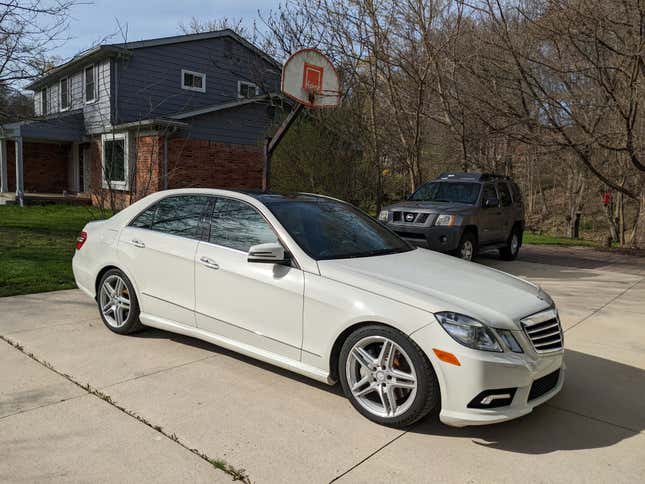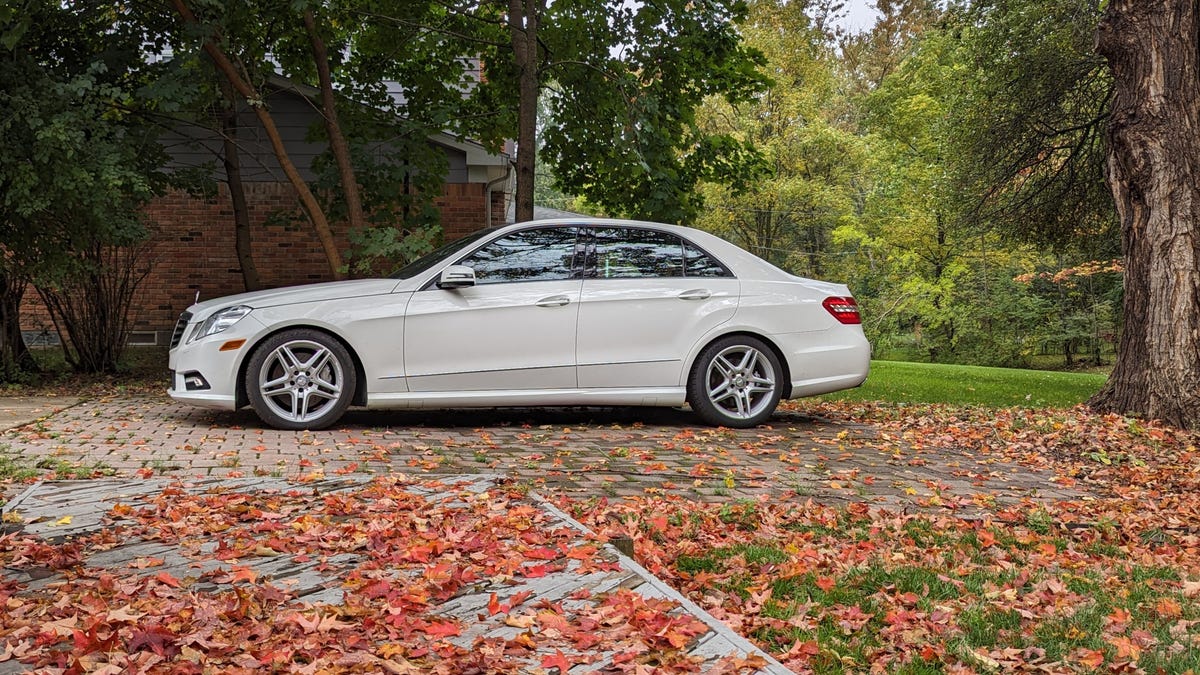Not too long ago an opportunity arose to rescue a family member’s neglected 2011 W212 Mercedes E550 from Florida. It was slammed on the ground with faulty air suspension and badly in need of a full service. They considered trading it in, but when the offer came back at $10,000, they felt it would be worth more to someone who could fix it. This is how I ended up installing an adjustable air suspension on a thirteen-year-old German luxury car.
They reached out to me to see if I wanted to adopt the problem child for free and attempt to bring it back to a fully functional low cost luxury sedan. I, an apparent self-flagellation aficionado, couldn’t resist the challenge.
This was perfect timing as I had just spent three months with a torch and reciprocating saw rebuilding the 230,000-mile suspension on a 2005 Nissan Xterra that spent its entire life in the Midwest, including winters. I was ready for a southern car that hadn’t seen salt and wouldn’t suffer from salt-related issues.
Once we got the car back to Michigan, the work started. The main culprit was the front passenger side air strut assembly with a hole large enough to drain the air system faster than the compressor could fill it. You can go aftermarket for replacements, but at the advice of multiple mechanics I was told to stick with OEM. Apparently issues are common with aftermarket or refurbished dampers and this made the ~$300 cost savings irrelevant since the main expense was the labor involved in rebuilding and aligning the front end.
Air struts from Mercedes can be tricky to come by and cost around $1,100 each. I made the executive decision to only replace the completely torn one and roll the dice on the driver’s side.
Both rear air bags also looked a bit rough despite them holding air, so I grabbed Arnott replacements for around $250 each and the install was pretty straightforward. two-and-a-half hours with a simple floor jack and some careful maneuvering and the job was done.
Or so I thought. The next week was filled with waking up and seeing the car on the ground each morning followed by 30 minutes of me crawling around with a spray bottle filled with soapy water trying to find the leak. “I must have knocked something loose during the install” I thought to myself. I checked the entire air line run, then disassembled and checked the valve block that distributes the air to all four corners. I even inspected the compressor and air tank. No leaks to be found anywhere.
After a few days of frustration I thought to check the brand new parts I just installed and sure enough, there was a leak! The brass pneumatic fitting that is factory-installed was not torqued sufficiently and air was leaking out of the threads. This fitting screws into the plastic housing of the air bag and there are warnings all over the Arnott documentation telling you specifically not to tighten it because it has been torqued at the factory to exact specifications.
Luckily, Arnott has incredible support representatives. I was able to speak with them on the phone and share photos/videos of the whole process and we decided it was worth trying to torque the brass fitting down in situ to avoid the extra cost and trouble of replacing the entire bag with a new one. I lightly torqued the brass fitting while keeping an eye on the soapy water for the bubbles to stop and sure enough, it worked.
Obviously, once I had it running well I figured it was the perfect time to play around and try to break it by installing a custom aftermarket air suspension control module.
If you’re intent on messing up your suspension, there are a ton of options. Some “trick” the factory controller by changing the suspension height sensor linkages and some plug into your OBD port and connect with a phone app. I’ve always had an affinity for the “OEM+” method of modifying cars so I searched for a solution that would seamlessly integrate with the vehicle and not require me to bring out a phone or separate controller every time I wanted to make adjustments.
The solution that checked these boxes was the LowMo M1 from loweringmodule.com. This is a really slick custom controller that splices into the factory CAN communication behind the footwell on the passenger side. Once installed, it can be controlled via the media controls on the steering wheel. Hold the “End Call” button for a few seconds and the dash pops up with the “Suspension Control” settings. Here you can lower or raise the default height for the vehicle and you can adjust the front and rear independently.
I have settled on -5 for the front and -3 for the rear which is about a 1-1.5” drop from the factory height and the limit before I started to notice a significant degradation in ride quality. In the winter I can throw it back to factory height or even a bit higher and not worry about dragging on deeper snow, it’s as easy as going through the settings on the dash.

The controller also has the ability to enable or disable an automatic return to factory height above 55mph so even if you have it slammed VIP style like the picture below, you’re not getting unnecessary camber wear or ride comfort deterioration on long trips.
Now I just need to see how long I can go before the driver’s side air strut decides to punish me for spending $1k on a suspension controller instead of fixing it…

